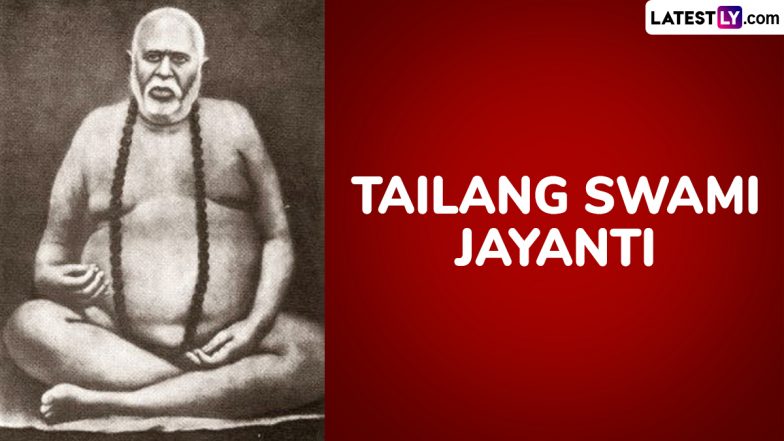Maha Shivratri is a very significant and auspicious Hindu festival. It is celebrated every year by Hindus across the globe with a lot of joy, faith, and devotion. Maha Shivratri 2025 falls on Wednesday, February 26. It commemorates the divine union of Lord Shiva and Goddess Parvati. It is also believed that, on this night, Lord Shiva performs his divine dance known as the Tandav. Maha Shivratri, also called Mahashivratri or the ‘Great Night of Shiva,’ is celebrated mainly in honour of Lord Shiva, one of the most loved and revered Hindu deities. The festival usually takes place on the 14th day of the dark fortnight (Krishna Paksha) in the Hindu lunar month of Phalguna or Magha, which usually corresponds with February or March according to the Gregorian calendar. Fasting Food for Mahashivratri: From Sabudana Khichdi to Fruit Chaat, 5 ‘Vrat Ka Khana’ To Eat on Maha Shivratri.
Maha Shivratri 2025 Date
Maha Shivratri 2025 falls on Wednesday, February 26.
Maha Shivratri 2025 Nishita Kaal Puja Time and Duration
The Maha Shivratri 2025 Nishita Kaal Puja time is from 12:27 AM IST to 01:16 AM IST on February 27, and the duration is for 49 minutes.
Maha Shivratri 2025 Parana Time
The Maha Shivratri 2025 Parana Time on February 27 is from 06:59 AM IST to 08:54 AM IST.
Maha Shivratri 2025 Puja Timings
• The ratri first prahar puja timing is from 06:43 PM IST to 09:47 PM IST.
• The ratri second prahar puja time is from 09:47 PM IST to 12:51 AM IST on February 27.
• The ratri third prahar puja time is from 12:51 AM IST to 03:55 AM IST on February 27.
• The ratri fourth prahar puja time is from 03:55 AM IST to 06:59 AM IST on February 27.
• The chaturdashi tithi Begins 11:08 AM on February 26, 2025.
• The chaturdashi tithi Ends 08:54 AM on February 27, 2025.
Maha Shivratri Rituals
Devotees follow several rituals and practices for Maha Shivratri.
• Devotees wake up early in the morning and take a bath to cleanse themselves.
• The puja room, or the altar, is cleaned, and an idol of Lord Shiva is placed, and the abhishekam is performed with milk, honey, curd, ghee, water, flowers, sandal paste, and more.
• On this day, devotees observe a fast and consume only sattvik foods. They only consume milk or fruits and water and even end the fast with sattvik food that contains some milk or water, fruits, and grains.
• Through the day, devotees read stories of Lord Shiva, sing bhajans, chant mantras, worship Lord Shiva, offer prayers, and seek his blessings.
• Devotees also take a second bath before performing the puja in the evening or visiting the temple.
• Many devotees also visit Lord Shiva temples, spend some time in self-reflection, and take part in kirtans and bhajans.
Maha Shivratri Significance
Maha Shivratri is not like regular festivals that are celebrated with firecrackers, decorations, and major celebrations. Maha Shivratri is a night of deep devotion, faith, prayer, meditation, and spiritual energy. According to popular belief, this is the sacred night when Lord Shiva and Goddess Parvati were married. After ages of waiting, undergoing trials, and meditating, Goddess Parvati finally won Lord Shiva’s heart, and they united. It is said that the joy of their wedding was so pure and great that the gods themselves blessed the Earth and filled the night with divine love and energy.
It is also believed that on this auspicious night, Lord Shiva performed the divine dance known as the Tandav. The cosmic dance symbolises creation, preservation, and destruction. This powerful dance represents the eternal cycle of life and the universe’s balance. Maha Shivratri Thandai Recipes: 5 Refreshing Ways To Enjoy This Traditional Indian Cold Beverage on Mahashivratri.
Maha Shivratri is very important for Hindus, as it is believed that praying and fasting with sincerity and devotion on this night helps fulfill wishes, brings spiritual growth, and frees one from the cycle of birth and death. On this day, devotees worship Lord Shiva to seek his blessings for inner peace and prosperity. For Hindus all around the world, it is a time of deep faith and spiritual renewal.
(The above story first appeared on LatestLY on Feb 06, 2025 04:19 PM IST. For more news and updates on politics, world, sports, entertainment and lifestyle, log on to our website latestly.com).






